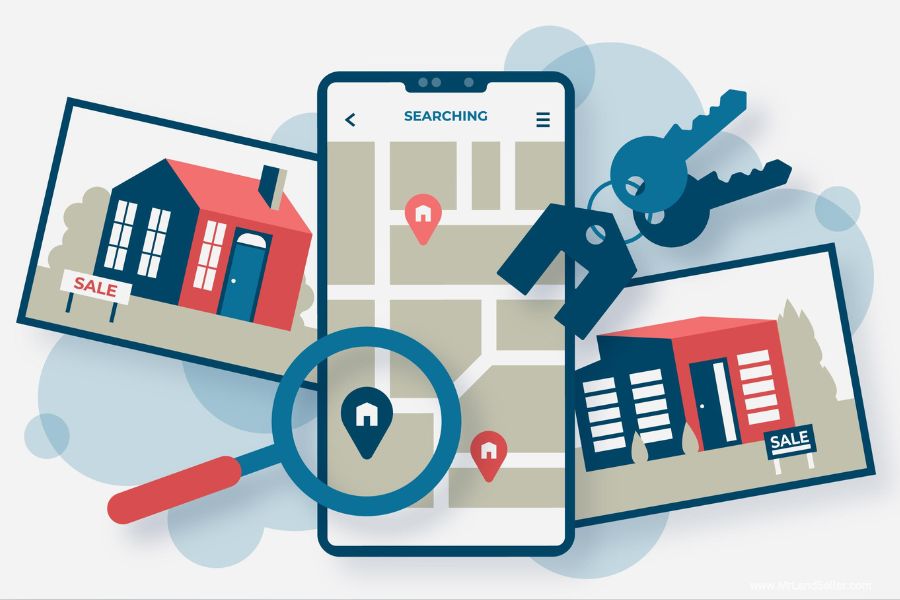How to Secure Financing for Buying Land in 11 Steps: Tips and Strategies

Purchasing land can be an excellent investment, whether you’re planning to build your dream home, start a business, or simply hold it as an asset for future development. However, securing financing for buying land is often more challenging than obtaining a mortgage for a home. This guide provides tips and strategies to help you navigate the process of financing your land purchase successfully.
Understanding the Challenges of Financing Land
Before diving into the tips and strategies, it’s essential to understand why securing financing for land is more complex than for other types of real estate:
- Higher Risk: Lenders view vacant land as a higher risk compared to developed properties because land doesn’t generate income and can be harder to sell.
- Down Payments: Land loans typically require larger down payments, often ranging from 20% to 50% of the purchase price.
- Shorter Loan Terms: Land loans usually have shorter repayment terms, often between two to five years, though some can extend up to 15 years.
- Interest Rates: Interest rates for land loans are generally higher due to the increased risk.

Types of Land Loans
Understanding the different types of land loans can help you choose the best financing option for your needs:
- Raw Land Loans: These are for undeveloped land without utilities or improvements. These loans are the riskiest and often have the highest down payments and interest rates.
- Unimproved Land Loans: These are for land that has some utilities and access but still lacks significant development. They are slightly less risky than raw land loans but still require substantial down payments and higher interest rates.
- Improved Land Loans: These are for land with access to utilities, roads, and other infrastructure. These loans are less risky and typically have better terms than raw or unimproved land loans.
- Tips and Strategies for Securing Financing
- Prepare a Solid Plan
Lenders want to see that you have a clear plan for the land. Whether you plan to build a home, develop a business, or hold the land as an investment, having a detailed plan increases your chances of securing a loan. Include information such as:
- Purpose of the land purchase
- Development plans and timelines
- Cost estimates for any improvements
- Projected value after development

- Improve Your Credit Score
A strong credit score is crucial for securing favorable loan terms. Before applying for a land loan, take steps to improve your credit score:
- Pay down existing debt
- Avoid taking on new debt
- Make all payments on time
- Check your credit report for errors and dispute any inaccuracies
- Save for a Larger Down Payment
A larger down payment reduces the lender’s risk and increases your chances of loan approval. Aim to save at least 20% of the land’s purchase price, though having 30% to 50% can significantly improve your loan terms.
- Shop Around for Lenders
Not all lenders offer land loans, and those that do may have different requirements and terms. Shop around and compare offers from various lenders, including:
- Banks and credit unions: Traditional financial institutions may offer land loans with competitive terms.
- Mortgage brokers: Brokers can help you find lenders specializing in land loans.
- Seller financing: Some sellers may be willing to finance the purchase, especially if the land has been on the market for a while.
- Rural development programs: If the land is in a rural area, you might qualify for special loan programs through the USDA or other rural development agencies.
- Consider Alternative Financing Options
If traditional land loans aren’t an option, consider alternative financing methods:
- Home Equity Loan or Line of Credit (HELOC): If you own a home with significant equity, you can use a home equity loan or HELOC to finance your land purchase.
- Personal Loans: Unsecured personal loans can be used for land purchases, though they typically have higher interest rates and shorter terms.
- Self-Directed IRA: If you have a self-directed IRA, you can use it to purchase land as an investment.
- Secure Pre-Approval
Getting pre-approved for a land loan can strengthen your position as a buyer and speed up the purchase process. Pre-approval shows sellers that you’re a serious buyer with financing in place, which can be a significant advantage in negotiations.
- Evaluate the Land Carefully
Lenders will thoroughly evaluate the land before approving a loan. Make sure the land is a sound investment by considering:
- Location: Is the land in a desirable area with growth potential?
- Access and Utilities: Is the land easily accessible, and does it have access to necessary utilities like water, electricity, and sewage?
- Zoning and Land Use Restrictions: Are there any zoning laws or restrictions that could affect your plans for the land?
- Environmental Concerns: Are there any environmental issues, such as flood zones or soil contamination, that could impact the land’s value or usability?
- Work with a Real Estate Agent Specializing in Land
A real estate agent with experience in land transactions can provide valuable insights and help you navigate the complexities of buying land. They can assist with finding suitable properties, negotiating with sellers, and understanding zoning and land use regulations.
- Prepare for Additional Costs
In addition to the purchase price, there are several other costs to consider when buying land:
- Closing Costs: These can include loan origination fees, title insurance, and recording fees.
- Survey Costs: A land survey is often required to confirm property boundaries and identify any encroachments.
- Environmental Assessments: Depending on the land’s location and previous use, you may need to conduct environmental assessments.
- Development Costs: If you plan to develop the land, factor in the costs of clearing, grading, installing utilities, and building structures.
- Understand the Loan Terms
Before signing any loan agreement, ensure you fully understand the terms and conditions:
Interest Rate: Is the interest rate fixed or variable? What is the APR?
Loan Term: What is the length of the loan? Are there any penalties for early repayment?
Down Payment: How much is required upfront?
Monthly Payments: What will your monthly payments be, and do you have a plan to afford them?
Balloon Payments: Does the loan include a balloon payment at the end of the term?
- Prepare for the Long-Term
Buying land is a long-term investment, and it’s essential to plan accordingly. Consider the following:
- Holding Costs: Even if you’re not developing the land immediately, there will be holding costs such as property taxes, insurance, and maintenance.
- Future Market Conditions: Market conditions can change, affecting the land’s value and your ability to sell or develop it in the future.
- Exit Strategy: Have a clear exit strategy, whether it’s selling the land, developing it, or holding it as an investment.
Conclusion
Securing financing for buying land requires careful planning, research, and preparation. By understanding the challenges, exploring different financing options, and taking strategic steps to strengthen your application, you can increase your chances of obtaining a land loan with favorable terms. Whether you’re purchasing land for personal use, development, or investment, these tips and strategies will help you navigate the process and make a sound financial decision.
Invest wisely, live well, and let Offers4land.com guide you on your journey to land ownership.
Also Find us on facebook.com/Offersforland


